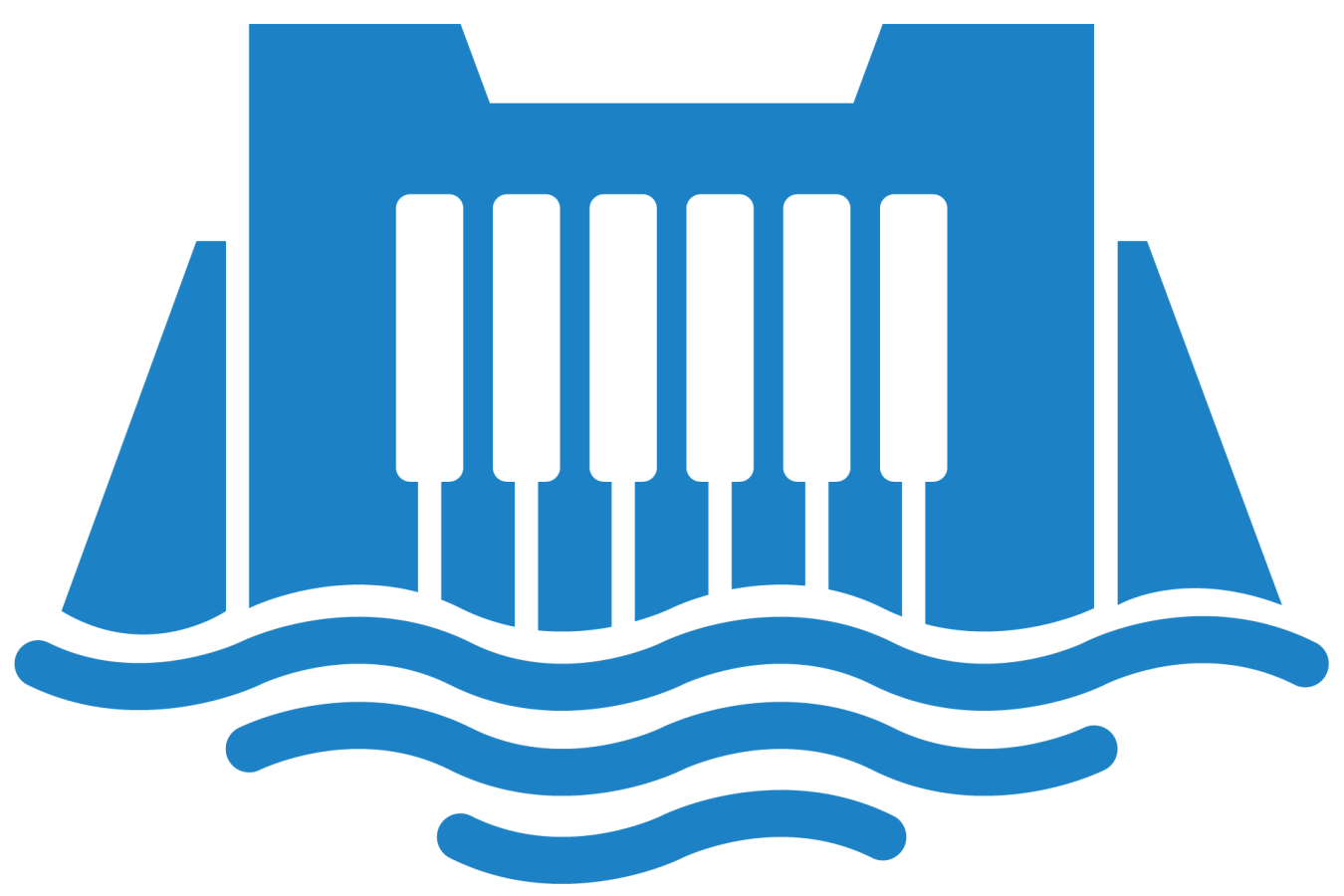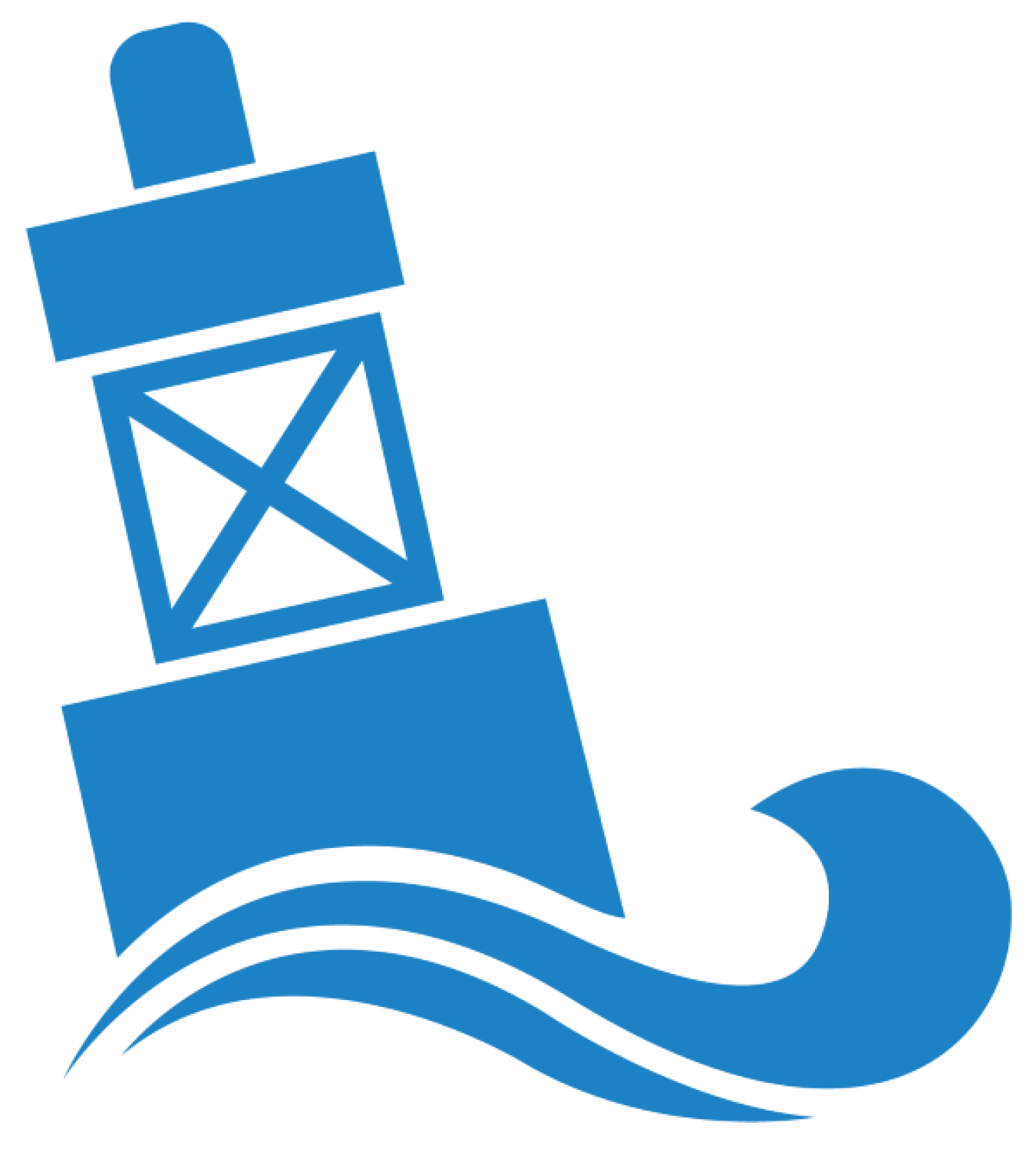In 2022 and 2023, the U.S. Department of Energy’s (DOE) Water Power Technologies Office (WPTO) advanced hydropower and marine energy technologies to help realize water power’s full potential to contribute to a clean energy future.
WPTO 2022–2023 Accomplishments Report
Letter from the Principal Deputy Assistant Secretary for EERE
Letters from Leadership
Read the latest from DOE's Office of Energy Efficiency and Renewable Energy (EERE) and WPTO leadership about this past year's accomplishments:
Letter from Principal Deputy Assistant Secretary Jeff Marootian
As a country and as a global society, we face an urgent climate crisis. That is why it is so important that we reach our nation's goals to achieve a clean electricity grid by 2035 and a net-zero-emissions economy by 2050. At the U.S. Department of Energy's Office of Energy Efficiency and Renewable Energy (EERE), we have an essential role in meeting these goals.
Within EERE, the Water Power Technologies Office (WPTO) supports technology innovation to enable the growth of environmentally sustainable hydropower as an economically competitive source of renewable energy. The office also supports the research, development, demonstration, and commercial application of marine energy technologies that expand and diversify the nation's clean energy portfolio. Advancing both hydropower and marine energy technologies is crucial to achieving our clean energy goals.
Letter from the Water Power Technologies Office Director Jennifer Garson
I am excited to share the U.S. Department of Energy’s (DOE’s) Water Power Technologies Office (WPTO) 2022–2023 Accomplishments Report. In our report, we highlight a selection of the impressive work underway across the country to advance the hydropower and marine energy sectors.
As we publish this report, I am also marking the end of my tenure as the office’s director. I am incredibly proud of everything WPTO and its partners at the national laboratories and in industry and academia have accomplished together during my time in the office. With that in mind, I’m excited to share some of our more recent successes.
Projects Across WPTO
In Fiscal Year 2023, several WPTO-funded projects supported efforts across the water power sector. These efforts focused on workforce development and innovative research ideas in hydropower and marine energy at DOE national laboratories and academic institutions.
 WPTO hosted the first Hydropower Collegiate Competition and the first in-person Marine Energy Collegiate Competition. Endicott College and the University of New Hampshire won the 2023 Hydropower and Marine Energy Collegiate Competitions, respectively.
WPTO hosted the first Hydropower Collegiate Competition and the first in-person Marine Energy Collegiate Competition. Endicott College and the University of New Hampshire won the 2023 Hydropower and Marine Energy Collegiate Competitions, respectively. WPTO Expands Innovative Funding Program to Universities and Selects New National Laboratory ProjectsThe Water Power Technologies Office's expanded Seedling and Sapling program now offers grants and funding opportunities to support research and development activities at academic institutions that do not have significant water power portfolios.
WPTO Expands Innovative Funding Program to Universities and Selects New National Laboratory ProjectsThe Water Power Technologies Office's expanded Seedling and Sapling program now offers grants and funding opportunities to support research and development activities at academic institutions that do not have significant water power portfolios.
Hydropower Program
Hydropower plants—big and small—produce renewable energy using the elevation difference created by a dam or diversion structure. Water flows in one side and exits at a lower point, spinning a turbine, which runs a generator and produces electricity.
Hydropower is one of the oldest and largest sources of renewable energy. In 2022, it accounted for about 6.2% of total U.S. utility-scale electricity generation and 28.7% of total utility-scale renewable electricity generation. Additionally, pumped storage hydropower remains the largest contributor to U.S. energy storage, representing roughly 96% of utility-scale energy storage capacity in the United States in 2022.
WPTO’s Hydropower Program conducts research, development, demonstration, and commercial activities to advance transformative, cost-effective, reliable, and environmentally sustainable hydropower and pumped storage hydropower technologies. The program also aims to better understand and capitalize on opportunities for these technologies to support the nation's rapidly evolving grid and to improve energy-water infrastructure and security.
Learn more about success stories across the five activity areas in which the Hydropower Program focuses its work.
 A national laboratory report examines how advanced manufacturing and materials could benefit the hydropower sector by lowering operation costs and increasing the efficiency of the existing fleet and future facilities.
A national laboratory report examines how advanced manufacturing and materials could benefit the hydropower sector by lowering operation costs and increasing the efficiency of the existing fleet and future facilities. National laboratory researchers released NPD HYDRO, a comprehensive tool that helps users identify and prioritize opportunities to retrofit non-powered dams.
National laboratory researchers released NPD HYDRO, a comprehensive tool that helps users identify and prioritize opportunities to retrofit non-powered dams.
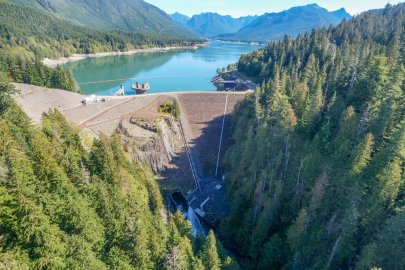 A new report outlines current gaps in hydropower testing capabilities in the United States and key improvements needed to expand hydropower technology validation and innovation.
A new report outlines current gaps in hydropower testing capabilities in the United States and key improvements needed to expand hydropower technology validation and innovation.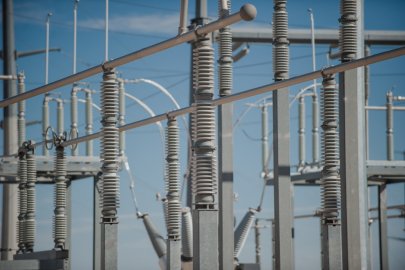 A new study and planning tool will help hydropower facility owners prepare and plan to interconnect their facilities to the grid.
A new study and planning tool will help hydropower facility owners prepare and plan to interconnect their facilities to the grid.
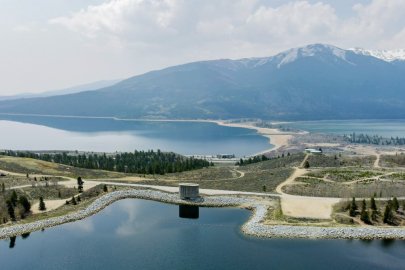 A new map and web tool helps hydropower stakeholders understand how the Inflation Reduction Act's investment tax credits can be used to develop pumped storage hydropower projects across the United States.
A new map and web tool helps hydropower stakeholders understand how the Inflation Reduction Act's investment tax credits can be used to develop pumped storage hydropower projects across the United States. Two national laboratories issued three publications that analyze how hydropower's value is likely to increase as the United States transitions to a clean energy grid.
Two national laboratories issued three publications that analyze how hydropower's value is likely to increase as the United States transitions to a clean energy grid.
 Idaho National Laboratory, working with Fall River Electric Cooperative, demonstrated how the new Microgrid in a Box can strengthen small hydropower plants’ abilities to help electric grids recover after a blackout or power disturbance.
Idaho National Laboratory, working with Fall River Electric Cooperative, demonstrated how the new Microgrid in a Box can strengthen small hydropower plants’ abilities to help electric grids recover after a blackout or power disturbance. New study identified more than 1,800 sites in Alaska where the state could develop pumped storage hydropower projects to help support its transition to clean energy.
New study identified more than 1,800 sites in Alaska where the state could develop pumped storage hydropower projects to help support its transition to clean energy.
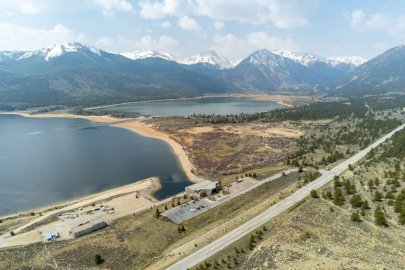 Researchers analyzed the life cycle greenhouse gas impacts of energy storage technologies and found that pumped storage hydropower has the lowest global warming potential on average.
Researchers analyzed the life cycle greenhouse gas impacts of energy storage technologies and found that pumped storage hydropower has the lowest global warming potential on average. National laboratory report can improve decision-making on linings used at pumped storage hydropower facilities, which can help make these facilities more resilient and strengthen their benefits to the grid.
National laboratory report can improve decision-making on linings used at pumped storage hydropower facilities, which can help make these facilities more resilient and strengthen their benefits to the grid.
 Idaho National Laboratory researchers worked with hydropower stakeholders to adapt an open-source software solution to support cybersecurity at hydropower facilities.
Idaho National Laboratory researchers worked with hydropower stakeholders to adapt an open-source software solution to support cybersecurity at hydropower facilities.
 Pacific Northwest National Laboratory supported the 25th annual Salmon Summit, an educational event in eastern Washington designed in part to inspire the next generation of hydropower researchers, diverse STEM professionals, and a science-aware community.
Pacific Northwest National Laboratory supported the 25th annual Salmon Summit, an educational event in eastern Washington designed in part to inspire the next generation of hydropower researchers, diverse STEM professionals, and a science-aware community. National laboratory researchers examined and published a report on how climate change may affect water availability for federal hydropower marketing and generation and its impact on future energy demand.
National laboratory researchers examined and published a report on how climate change may affect water availability for federal hydropower marketing and generation and its impact on future energy demand.
 Researchers used a variety of sampling techniques to consistently and accurately measure methane and carbon emissions from six hydropower reservoirs
Researchers used a variety of sampling techniques to consistently and accurately measure methane and carbon emissions from six hydropower reservoirs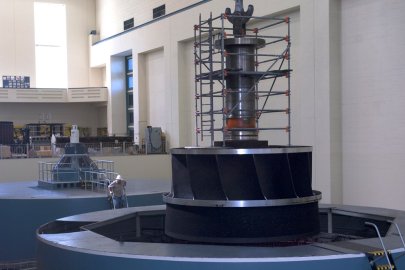 A biodegradable and nontoxic hydropower oil has gone through several rounds of testing as its developer aims to ramp up production to achieve commercialization in the next few years.
A biodegradable and nontoxic hydropower oil has gone through several rounds of testing as its developer aims to ramp up production to achieve commercialization in the next few years.
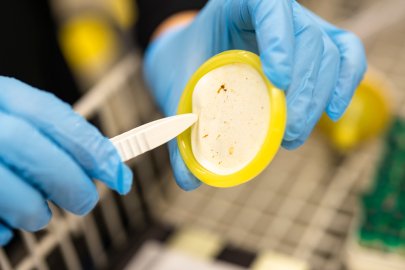 Oak Ridge National Laboratory improved upon fish species detection and counting using environmental DNA and RNA sequencing, potentially saving time, decreasing costs, and reducing environmental impacts on aquatic species and habitats.
Oak Ridge National Laboratory improved upon fish species detection and counting using environmental DNA and RNA sequencing, potentially saving time, decreasing costs, and reducing environmental impacts on aquatic species and habitats. A new, nontoxic antibiofouling coating reduced the adhesion of algae, mussels, and larva on flat surfaces, rope, nets, and other materials used in the hydropower and marine energy sectors.
A new, nontoxic antibiofouling coating reduced the adhesion of algae, mussels, and larva on flat surfaces, rope, nets, and other materials used in the hydropower and marine energy sectors.
- Researchers evaluated challenges and opportunities facing the hydropower industry and how it could attract a new, more diverse workforce.
 The new Hydropower eLibrary serves as a tool for industry stakeholders as they navigate the permitting and licensing process associated with new projects or upgrades at existing facilities.
The new Hydropower eLibrary serves as a tool for industry stakeholders as they navigate the permitting and licensing process associated with new projects or upgrades at existing facilities.
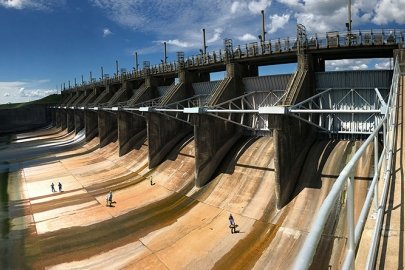 The 2023 edition of the U.S. Hydropower Market Report provides the latest data and research findings to offer a comprehensive overview of developments in the U.S. hydropower and pumped storage hydropower fleet and industry trends.
The 2023 edition of the U.S. Hydropower Market Report provides the latest data and research findings to offer a comprehensive overview of developments in the U.S. hydropower and pumped storage hydropower fleet and industry trends.
 The Water Power Technologies Office made investments through three funding opportunities, a technical assistance program, and a series of national laboratory projects to advance hydropower technologies.
The Water Power Technologies Office made investments through three funding opportunities, a technical assistance program, and a series of national laboratory projects to advance hydropower technologies.
Marine Energy Program
Marine energy technologies transform the incredible amount of energy in the natural flow of oceans and rivers—like currents, tides, and waves—into clean electricity. Because these technologies are still developing, no single technology has yet proven to be the most efficient or cost-effective.
The opportunities to harness marine energy are abundant. The total available marine energy resource in the United States is equivalent to approximately 57% of U.S. power generation. Even if only a small portion of this technical resource potential is captured, marine energy technologies would make significant contributions to the nation’s energy needs. These resources are also highly predictable, making them promising contributors to a stable, reliable clean energy grid. For example, the daily and seasonal cycles of marine energy resources make them an excellent complement to other renewable energy sources like wind energy and solar power.
WPTO’s Marine Energy Program conducts research, development, demonstration, and commercial activities that advance the development of reliable, cost-competitive marine energy technologies and reduce barriers to deployment.
Learn more about success stories across the four activity areas in which the Marine Energy Program focuses its work.
 A national laboratory-led team deployed a first-of-its-kind marine carbon dioxide removal in Sequim, Washington. The system, developed by Ebb Carbon, is capable of sequestering 100 tons of carbon dioxide per year.
A national laboratory-led team deployed a first-of-its-kind marine carbon dioxide removal in Sequim, Washington. The system, developed by Ebb Carbon, is capable of sequestering 100 tons of carbon dioxide per year.- National laboratory researchers designed a potentially more comprehensive and accurate methodology to measure wave energy in the United States and around the world.
 Team develops artificial intelligence-based system that searches for optimal placement and monitors environmental effects of marine energy devices.
Team develops artificial intelligence-based system that searches for optimal placement and monitors environmental effects of marine energy devices. Researchers proved that taking a co-design approach to building a wave energy converter results in a more durable, powerful, and efficient device.
Researchers proved that taking a co-design approach to building a wave energy converter results in a more durable, powerful, and efficient device.
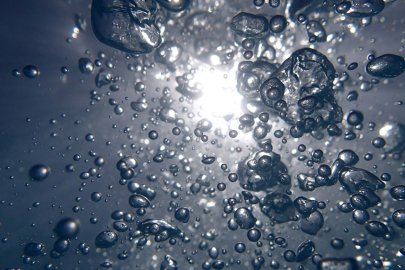 National laboratory researchers explore a new laser surface modification approach for marine energy devices to reduce corrosion and biofouling.
National laboratory researchers explore a new laser surface modification approach for marine energy devices to reduce corrosion and biofouling.
 Triton Systems Inc. successfully tested its wave energy converter in hurricane-level waves, proving the durability of its prototype and demonstrating that marine energy can reliably power data collection and ocean exploration activities.
Triton Systems Inc. successfully tested its wave energy converter in hurricane-level waves, proving the durability of its prototype and demonstrating that marine energy can reliably power data collection and ocean exploration activities.- ORPC tests its new Modular RivGen Power System in Millinocket, Maine. Future applications may include power for electric vehicle charging stations, critical infrastructure, and communities.
 Sandia National Laboratories identified innovative wave energy converter concepts that could power sensors on an ocean observing buoy.
Sandia National Laboratories identified innovative wave energy converter concepts that could power sensors on an ocean observing buoy.- Researchers at the National Renewable Energy Laboratory expanded the capabilities of their open-source modeling tool to enable simulation of marine energy turbines to help optimize technology designs.
 NREL researchers identified optimal materials for harnessing ocean thermal gradients and generating electricity to power underwater vehicles.
NREL researchers identified optimal materials for harnessing ocean thermal gradients and generating electricity to power underwater vehicles. The National Renewable Energy Laboratory and Pacific Northwest National Laboratory completed the first step in developing the Community Deployment Readiness Framework to support remote, coastal, and island community-driven energy transitions.
The National Renewable Energy Laboratory and Pacific Northwest National Laboratory completed the first step in developing the Community Deployment Readiness Framework to support remote, coastal, and island community-driven energy transitions.
 The National Renewable Energy Laboratory and Pacific Northwest National Laboratory installed and continued the construction of critical testing infrastructure that will help to advance research and testing of marine energy technologies.
The National Renewable Energy Laboratory and Pacific Northwest National Laboratory installed and continued the construction of critical testing infrastructure that will help to advance research and testing of marine energy technologies. In Fiscal Year 2023, the Testing Expertise and Access for Marine Energy Research program surpassed $10 million of technical support across more than 100 marine energy projects since the program launched in May 2020.
In Fiscal Year 2023, the Testing Expertise and Access for Marine Energy Research program surpassed $10 million of technical support across more than 100 marine energy projects since the program launched in May 2020.
 The Triton Initiative developed and tested methodologies and tools to help researchers better understand and evaluate how environmental stressors related to marine energy technologies may impact marine wildlife.
The Triton Initiative developed and tested methodologies and tools to help researchers better understand and evaluate how environmental stressors related to marine energy technologies may impact marine wildlife. Construction on the PacWave South test facility continued in Fiscal Year 2023 with milestones that include progress in building a facility to distribute energy generated by devices tested while researchers collect data on those devices.
Construction on the PacWave South test facility continued in Fiscal Year 2023 with milestones that include progress in building a facility to distribute energy generated by devices tested while researchers collect data on those devices.
 Researchers developed an environmentally acceptable lubricant to help increase the sustainability and durability of tidal turbines.
Researchers developed an environmentally acceptable lubricant to help increase the sustainability and durability of tidal turbines.
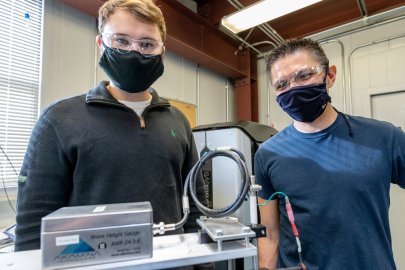 Researchers supported multiple marine energy projects with the Modular Ocean Data Acquisition system, which allows marine energy technology developers to collect data on how their prototypes perform in the lab, wave tank tests, or open-ocean trials.
Researchers supported multiple marine energy projects with the Modular Ocean Data Acquisition system, which allows marine energy technology developers to collect data on how their prototypes perform in the lab, wave tank tests, or open-ocean trials.
 In Fiscal Year 2023, the Water Power Technologies Office announced nearly $10 million to advance the development of marine energy technologies and opened its largest funding opportunity to date.
In Fiscal Year 2023, the Water Power Technologies Office announced nearly $10 million to advance the development of marine energy technologies and opened its largest funding opportunity to date.
WPTO's Hydropower e-newsletter features news on R&D and applied science to advance sustainable hydropower and pumped-storage technologies.
WPTO's Marine Energy e-newsletter shares news and updates on tools, analysis, and emerging technologies to advance marine energy.
The WPTO e-newsletter brings funding opportunities, events, publications, hydropower, and marine energy updates directly to your inbox.


